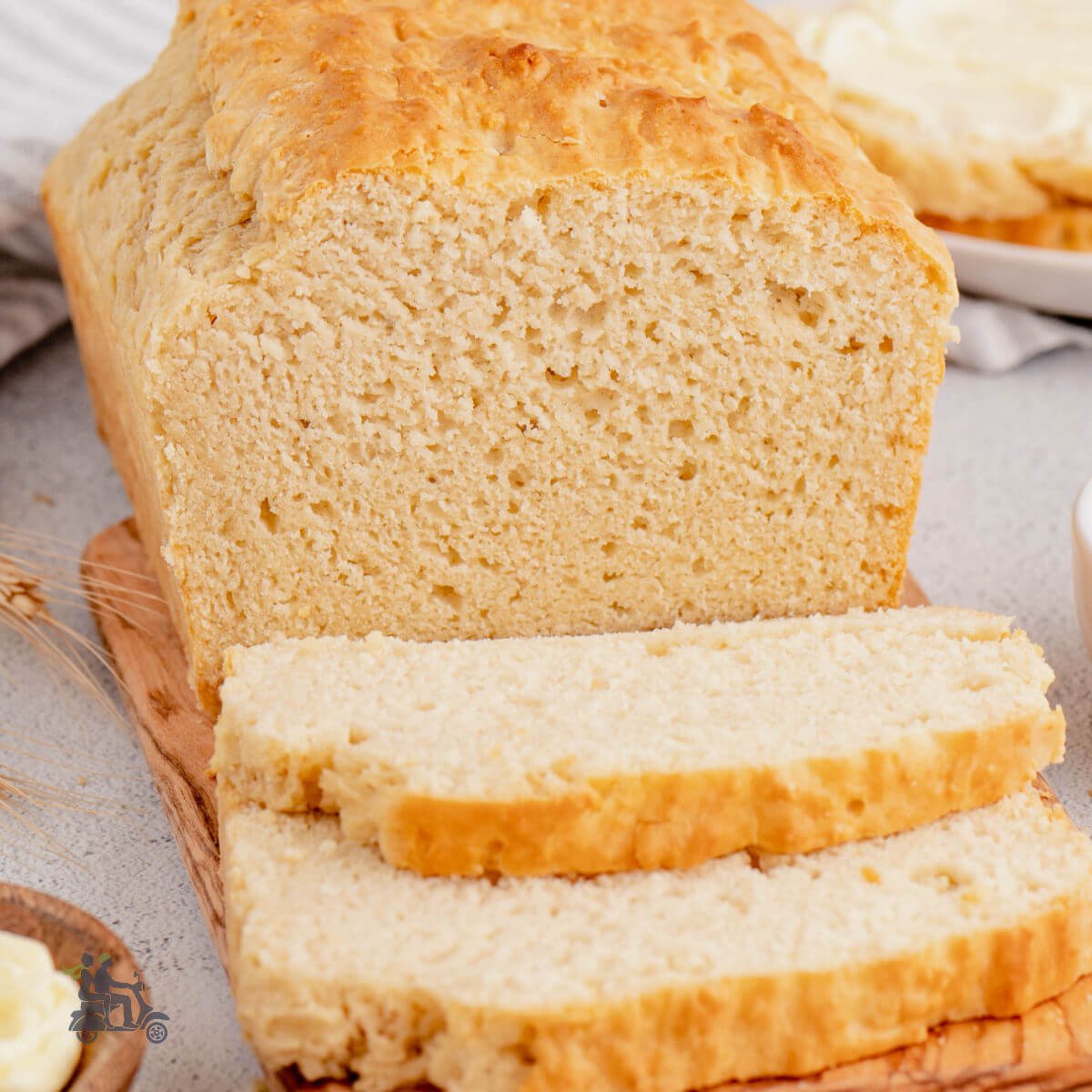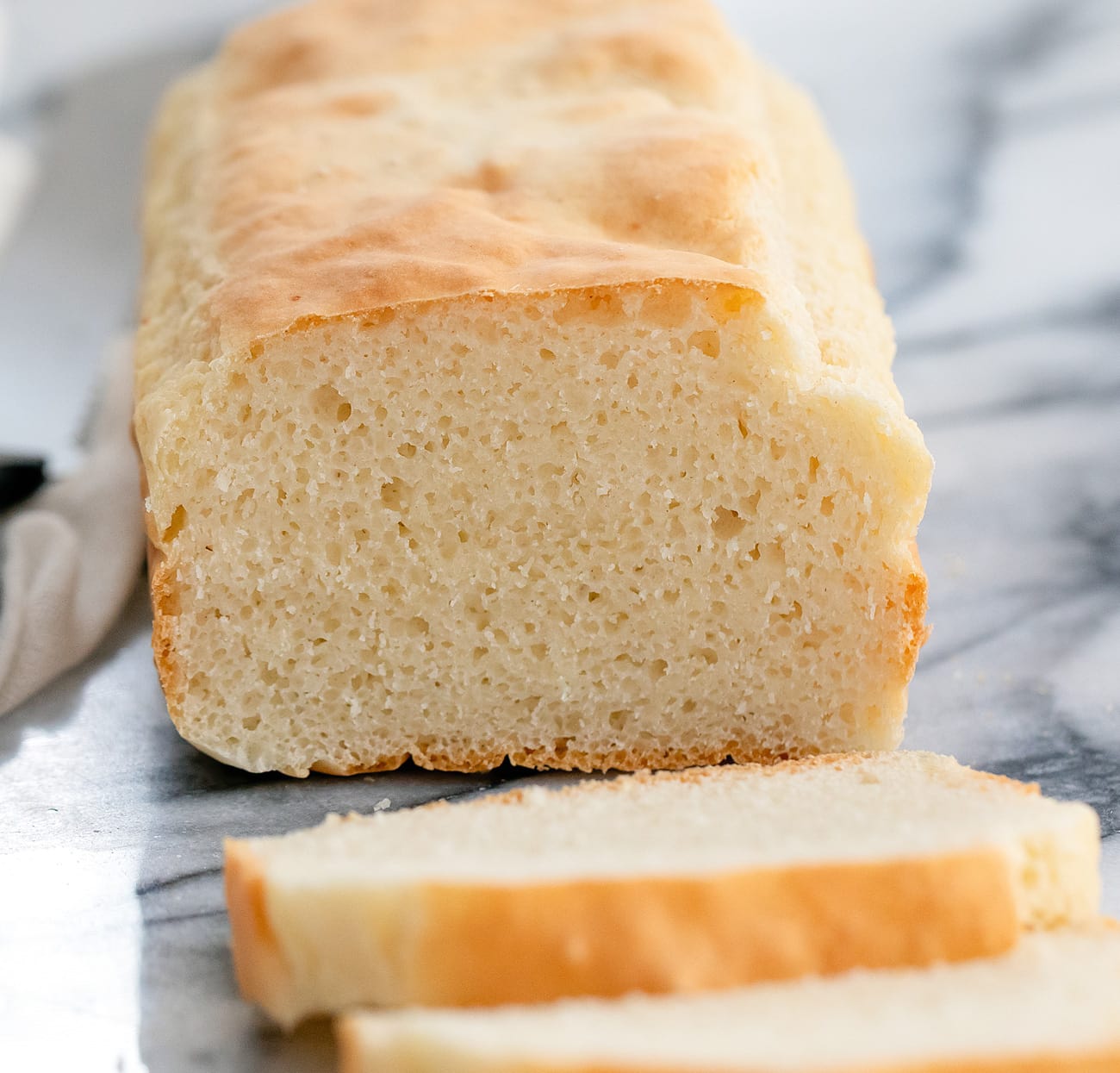Embark on a culinary adventure as we delve into the world of loaf bread recipes without yeast. Discover the secrets of creating delicious and wholesome bread using alternative leavening agents. From understanding the basics of bread making to exploring a range of recipes and troubleshooting common issues, this guide will empower you to master the art of yeast-free bread baking.
Whether you’re a seasoned baker seeking to expand your repertoire or a novice eager to embark on your bread-making journey, this comprehensive guide will provide you with the knowledge and techniques you need to create delectable yeast-free loaves that will tantalize your taste buds.
Bread-Making Basics
In the realm of baking, the art of creating delectable bread without the aid of yeast holds a special place. This alternative approach to bread-making relies on the transformative power of other leavening agents, such as baking powder or baking soda, to achieve a delectable and airy texture.
Leavening Agents
Leavening agents are the secret weapons that give bread its signature rise. In the absence of yeast, which requires time to activate and ferment, baking powder or baking soda step up to the plate. Baking powder, a combination of baking soda, an acid, and a starch, reacts when exposed to moisture, releasing carbon dioxide gas that creates pockets of air within the dough.
Baking soda, on the other hand, requires an acidic ingredient, such as buttermilk or lemon juice, to trigger the gas-producing reaction.
Ingredients and Their Functions
Yeast-free bread recipes utilize a range of ingredients, each playing a crucial role in the bread’s texture, flavor, and structure.
Flour
Flour provides the backbone of the bread. It contains proteins (gluten) that form a network when mixed with water, creating a cohesive dough. Different types of flour, such as wheat, rye, and almond flour, yield varying bread textures and flavors.
Water
Water hydrates the flour and activates the gluten proteins. The amount of water used affects the dough’s consistency and the bread’s crumb structure.
Salt
Salt enhances the bread’s flavor and strengthens the gluten network. It also inhibits yeast growth, which is desirable in yeast-free bread.
Leavening Agents
Leavening agents create gases that cause the bread to rise. Common leavening agents in yeast-free bread include baking soda, baking powder, and beaten eggs. These agents react with acidic ingredients to produce carbon dioxide, which expands and creates air pockets in the dough.
Step-by-Step Baking Process

Baking bread without yeast requires careful attention to detail and a precise understanding of the ingredients and their interactions. This step-by-step guide will provide you with the necessary instructions to create a delicious and satisfying loaf of yeast-free bread.
Before you begin, gather all the necessary ingredients and equipment. You will need flour, water, salt, baking powder, baking soda, and a large bowl, measuring cups and spoons, and a baking sheet.
Mixing the Ingredients
- In a large bowl, combine the flour, baking powder, baking soda, and salt.
- Gradually add water to the dry ingredients, stirring until a dough forms. The dough should be slightly sticky but not too wet.
- Knead the dough for 5-7 minutes until it becomes smooth and elastic.
Shaping the Loaf
- Once the dough has been kneaded, shape it into a loaf.
- Place the loaf on a baking sheet lined with parchment paper.
- Score the top of the loaf with a sharp knife to allow steam to escape during baking.
Baking the Bread
- Preheat the oven to 375°F (190°C).
- Bake the bread for 30-35 minutes, or until it is golden brown and sounds hollow when tapped.
- Remove the bread from the oven and let it cool on a wire rack before slicing and serving.
Troubleshooting Common Issues

The baking process can present challenges, but understanding potential problems and their solutions can help ensure a successful outcome. Here are some common issues and tips to address them:
Dense Bread
- Over-mixing: Gluten develops when flour and water are mixed. Over-mixing can create a dense, chewy texture. Mix until the ingredients are just combined.
- Insufficient rising time: Allow the dough to rise until it has doubled in size. This ensures proper yeast activation and gluten development.
- Incorrect baking temperature: Too high a temperature can create a crust that inhibits rising, while too low a temperature can prevent the bread from setting properly.
Gummy Texture
- Insufficient baking: Bake the bread until it reaches an internal temperature of 200-210°F (93-99°C) to ensure it is cooked through.
- Too much water: Excess water can result in a gummy texture. Follow the recipe’s measurements carefully and adjust the water gradually.
- Incorrect flour: Bread flour has a higher protein content than all-purpose flour, which creates a stronger gluten structure. Use the appropriate flour type.
Uneven Browning
- Uneven heat distribution: Preheat the oven thoroughly and ensure the bread is placed in the center of the rack for even heat distribution.
- Incorrect baking pan: Use a baking pan with a dark, non-stick surface that promotes even browning.
- Covering the bread: Covering the bread during baking can prevent a crispy crust from forming. Leave it uncovered during the final 15-20 minutes of baking.
5. Recipe Variations
The world of yeast-free bread making offers a wide canvas for creativity. Experiment with different flavors, textures, and ingredients to create unique variations that suit your taste buds.
Here are a few ideas to get you started:
Flavor Variations
- Herb Bread: Add a burst of freshness to your bread with chopped herbs like rosemary, thyme, or oregano.
- Garlic Bread: Enhance the savory flavors by incorporating minced garlic or garlic powder.
- Fruit Bread: Introduce sweetness and texture by adding dried fruits like cranberries, raisins, or apricots.
- Cheese Bread: Elevate the richness by adding shredded cheddar, mozzarella, or Parmesan cheese.
- Spiced Bread: Add a touch of warmth and complexity with spices like cinnamon, nutmeg, or cardamom.
Texture Variations
- Dense Bread: Reduce the liquid content or add more flour for a denser, more filling bread.
- Fluffy Bread: Increase the liquid content or add baking powder or soda for a lighter, fluffier texture.
- Chewy Bread: Use a higher ratio of gluten-rich flours like bread flour or vital wheat gluten for a chewy bite.
- Crispy Crust: Brush the bread with melted butter or oil before baking for a golden, crispy crust.
Ingredient Swaps
- Flour: Experiment with different flours like almond flour, coconut flour, or whole wheat flour for varying flavors and nutritional profiles.
- Liquids: Replace water with milk, yogurt, or kefir for added richness and flavor.
- Fats: Use butter, oil, or coconut oil for a tender crumb and enhanced flavor.
- Sweeteners: Honey, maple syrup, or coconut sugar can be used as natural sweeteners.
- Leavening Agents: Baking powder, soda, or a combination of both can be used as alternatives to yeast.
Health Benefits
Consuming yeast-free bread offers several potential health benefits:
- Enhanced Digestion: Yeast-free bread is easier to digest, making it suitable for individuals with digestive sensitivities or conditions like IBS (Irritable Bowel Syndrome).
- Reduced Bloating and Gas: Yeast fermentation can produce gases that cause bloating and discomfort. Yeast-free bread eliminates this issue, providing a more comfortable eating experience.
- Improved Nutrient Absorption: Yeast fermentation can interfere with the absorption of certain nutrients. By eliminating yeast, the body can better utilize the nutrients present in the bread.
Nutritional Value
Yeast-free bread is a nutritious food source, containing:
- Carbohydrates: Provides energy and supports bodily functions.
- Protein: Essential for building and repairing tissues.
- Fiber: Promotes digestive health and satiety.
- Vitamins and Minerals: Varies depending on the ingredients used, but may include vitamins B, E, and minerals like iron and zinc.
Suitability for Yeast Sensitivities
Individuals with yeast sensitivities or allergies may benefit from consuming yeast-free bread. Yeast sensitivities can cause various symptoms, including digestive issues, skin problems, and respiratory difficulties. By avoiding yeast, these individuals can minimize or eliminate these symptoms.
Summary
As you embark on your yeast-free bread-making adventures, remember that practice makes perfect. Don’t be discouraged by any initial setbacks; instead, view them as opportunities to refine your technique and deepen your understanding of the process. Experiment with different recipes, adjust ingredients to suit your preferences, and embrace the joy of creating wholesome and delicious bread that nourishes both body and soul.
FAQ Corner
What are the benefits of consuming yeast-free bread?
Yeast-free bread may offer several potential health benefits, including improved digestion, reduced inflammation, and enhanced nutrient absorption. It is also a suitable option for individuals with yeast sensitivities or those following specific dietary restrictions.
Can I use regular flour to make yeast-free bread?
Yes, you can use regular all-purpose flour to make yeast-free bread. However, using bread flour or a combination of bread flour and all-purpose flour can result in a bread with a chewier texture and better rise.
How do I store yeast-free bread?
Store yeast-free bread at room temperature for up to 3 days. For longer storage, wrap the bread tightly in plastic wrap or place it in an airtight container and freeze for up to 2 months.
